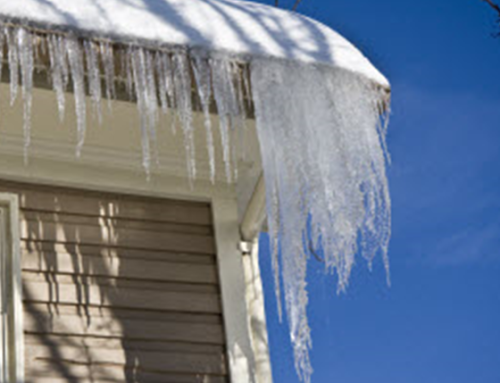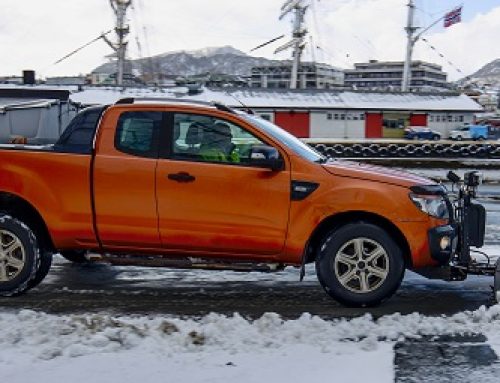This blog was posted by Progressive Insurance. The original blog can be found here.
As the air gets cooler, the leaves start to change, and boating season draws to a close, it’s time to start preparing your boat for winter. How you winterize your boat depends on its make and model (be sure to check your owner’s manual!), but there are a few best practices all boaters should follow.
Here are a few tips on how to winterize your boat.
Decide where to store your boat
In the water
If you plan to leave your boat in the slip through winter, you’ll want to make sure everything is closed up tight. Start by checking all windows, portholes, and seacocks to make sure things are properly sealed and free of leaks. Next, check bilges for any excess water. You should also test your bilge pumps and recharge your batteries to ensure they’ll continue to work as needed through the winter. It’d be wise to change your zincs, too.
If the water in your harbor is likely to freeze, consider suspending your boat above the water (if that’s an option) or installing a deicer if your marina doesn’t use a bubbler or deicing system already.
Out of the water
If you plan to haul your boat out for the winter, this is a great opportunity to thoroughly inspect the hull for damage or blisters, examine your propellers, shafts, and rudders for signs of corrosion, and clean your thru hulls and strainers. Once out of the water, allow all the seacocks to drain, ensure all windows and portholes are closed up, and switch off or disconnect all batteries.
If your boat will be stored outside, you may also want to consider protecting the exterior with shrink wrap or canvas.
Gather your supplies
The supplies you need will vary depending on your boat, motor, and storage setup, but will likely include the following:
- Nontoxic antifreeze for engines and plumbing systems.
- Fogging oil to prevent corrosion in engines.
- Fuel stabilizer for fuel tanks.
- Hoses and funnels for antifreeze and fogging oil.
- Buckets for draining water or changing oil.
- Canvas or shrink wrap to give your boat additional protection from the elements.
Winterize your motor
Outboard engines
Outboard motors, most commonly found on smaller boats, are self-contained units that include the engine, gearbox, and propeller.
Start by adding a fuel stabilizer to a nearly full tank (this protects your fuel from eroding over the winter). If you have the option, you could empty and clean your fuel tank entirely as an alternative.
Drain all water from the motor (including the cooling system). You may want to flush your engine with fresh water to clean out excess buildup. Next, run nontoxic antifreeze through your motor to prevent residual water droplets from freezing over the winter, as this can cause damage to fuel lines, carburetors, and injectors.
Once you’ve coated the engine with antifreeze, spray fogging oil into the carburetor (let the engine warm up first). This protects interior surfaces from deposit buildup.
Finally, check and change the oil, and spray pivots and gears with lubricating oil to prevent corrosion.
Inboard engines
As the name would suggest, unlike outboard engines that are mounted outside of a vessel, inboard motors are enclosed within the hull of the boat.
Start by cleaning fuel filters and stabilizing your fuel (filling tanks to about 95% is generally recommended) with a fuel stabilizer. This protects your tank, lines, carburetors, and injectors through the winter.
Next, flush your engine with antifreeze to prevent residual droplets of water from freezing and causing cracks. If your boat uses a raw water-cooling system (most do), you’ll want to be sure to use a nontoxic antifreeze.
After you’ve run antifreeze through your engine, coat it with fogging oil. Run the engine to warm it up before spraying fogging oil into the carburetor. This process is more labor-intensive for inboard motors, so it’s important to consult your owners’ manual, a mechanic, or an expert at your local boating store.
In addition to protecting your motor, you’ll want to check (and change!) your engine and transmission oil, inspect hoses and exhaust systems for buildup, cracking, or signs of corrosion (replace as needed), and seal up all engine openings to prevent air from getting inside.
Drain all fluids
If you have a head, galley, or water tanks onboard, be sure to drain all excess water from your plumbing systems (faucets, toilet bowls, pipes, etc.). You should also consider flushing your pipes with nontoxic antifreeze to prevent any remaining water droplets from freezing.
Clean your boat (inside and out!)
You don’t want to get stuck cleaning up last summer’s mess when it’s time to take your boat out of storage. Take some time to wipe down the interior and give the exterior a thorough scrubbing. Waxing your boat before tucking it away for winter helps protect it from the icy elements.
Keep an eye on things
If you plan to leave your boat in the water or if it’ll be stored outside, you’ll want to check on it periodically, as you may need to clear away excess snow or plug unexpected leaks—especially if you aren’t able to cover your boat (in shrink wrap or canvas).
Preparing your boat for winter hibernation can be a little sad, but winterizing it properly ensures a very happy reunion when summer rolls around next year. And whether you’re keeping it in the water or storing it until next time, be sure to keep everything you love protected with Progressive. To learn more about comprehensive boating insurance, click here.
Let the countdown to the next boating season begin!



